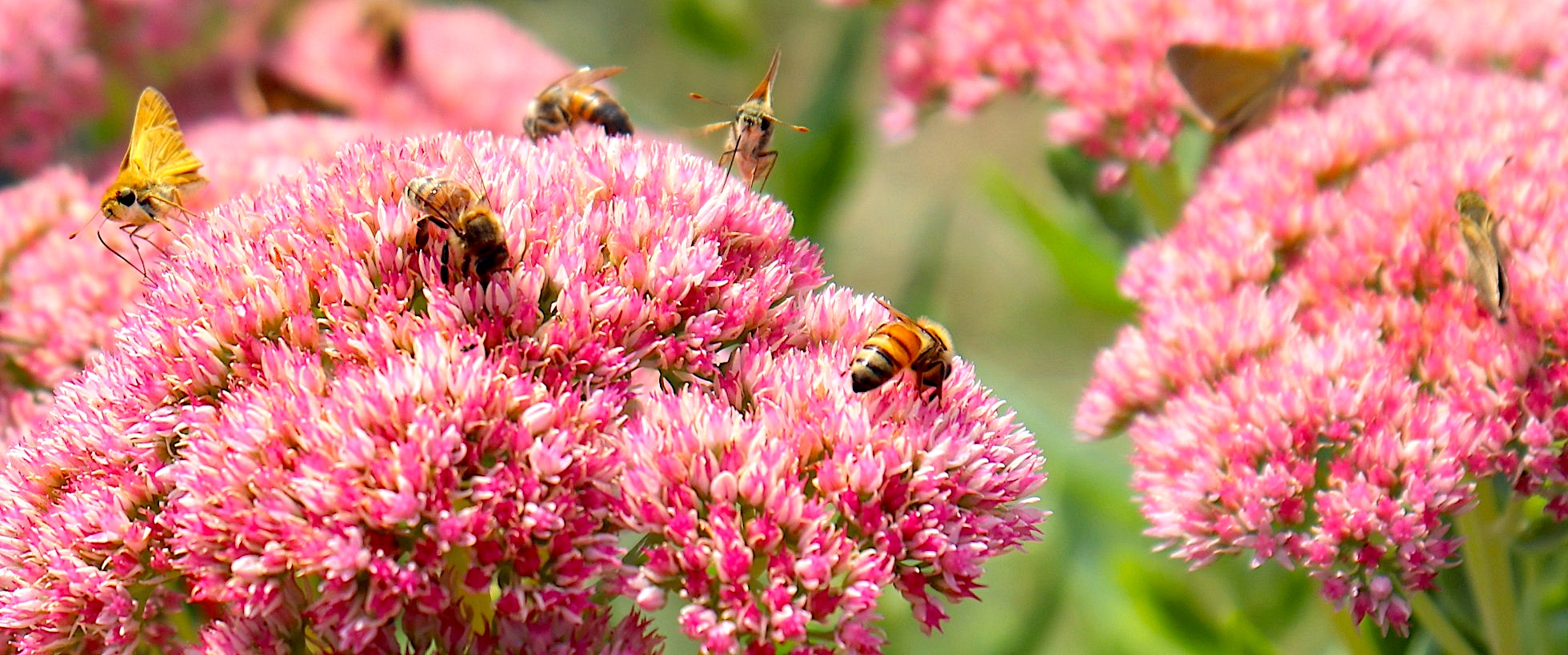Sedum: Pollinators love this easy-peasy purple and pink plant

COLUMBIA, Mo. — Sedums, also known as stonecrop, are low-maintenance plants that come with a host of benefits.
They withstand extreme heat and drought, yet some are winter-hardy as far north as USDA hardiness zone 3. “In short, sedums are about as low-maintenance as plants can get,” said University of Missouri Extension state horticulturist David Trinklein in a press release.
Sedum is a genus of succulent, herbaceous perennials with fleshy, flat or rounded leaves. There are as many as 400 species. Some spread along the ground with a mature height of only an inch or two. Others display an upright growth habit of about 24 inches.
Taller sedums produce large clusters of tiny star-shaped flowers in white, yellow, pink or red. “Because they tend to bloom in late summer and into fall, they are excellent for extending the flowering season of a pollinator garden,” said Trinklein.
“Sedums are valuable fall-blooming perennials that provide a crucial late-season food source for pollinators when other floral resources are scarce,” said MU Extension horticulturist Tamra Reall. “Their nectar-rich blooms, opening in late summer and continuing into fall, attract a wide range of pollinators, including bees, butterflies and other pollinators.”
Low-growing, spreading sedums were originally grown for their foliage. They spread via roots that form on horizontal creeping stems. Spreading sedums are ideal for sunny slopes and rock gardens, as low-maintenance ground covers and even on green roofs.
Sedums grow easily in full-sun settings with average, dry to medium, well-drained soils. As true succulents, they need good soil drainage to perform well and prefer sandy to gravelly soils of average to moderate fertility. Plants grown in overly rich soils or in too much shade will produce weak, floppy growth. They can withstand some light shade but do not tolerate foot traffic well.
Pinching in spring can force stems to grow thicker and bushier. As with most herbaceous perennials, sedums can be planted in the fall. However, plant selection at garden centers and plant nurseries normally is much better in the spring.
You can learn more about sedum at the Missouri Botanical Garden’s website at www.missouribotanicalgarden.org.
Trinklein recommended these 10 popular sedum cultivars to check out on Missouri Botanical Gardens’ website: Brilliant, Autumn Joy, Dark Magic, Dragon’s Blood, Rosey Glow, Weienstephaner Gold, Angelina, Sedum Dazzleberry Sparkler, and Firecracker Sparkler.
Miss Clipping Out Stories to Save for Later?
Click the Purchase Story button below to order a print of this story. We will print it for you on matte photo paper to keep forever.

